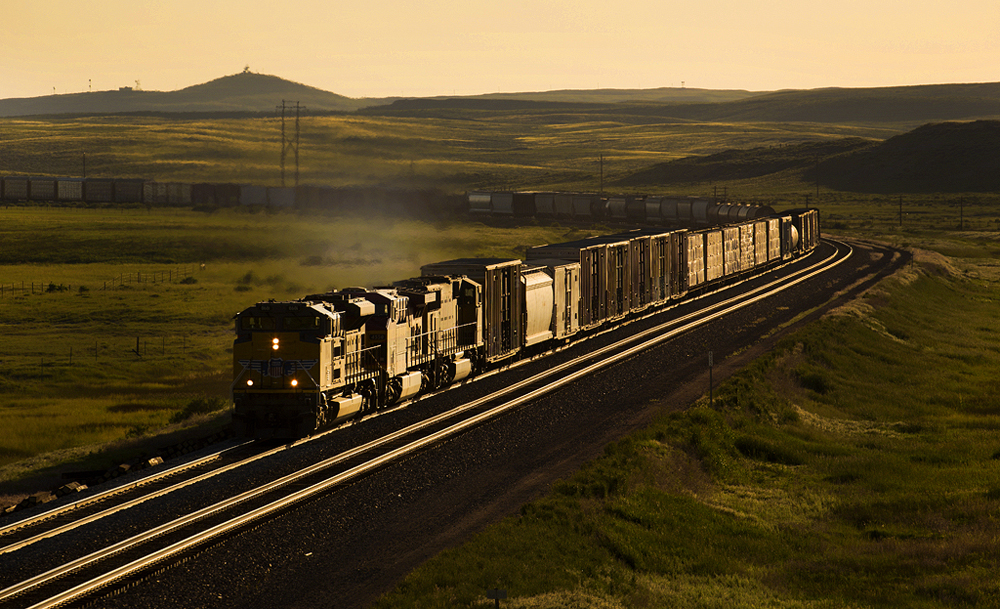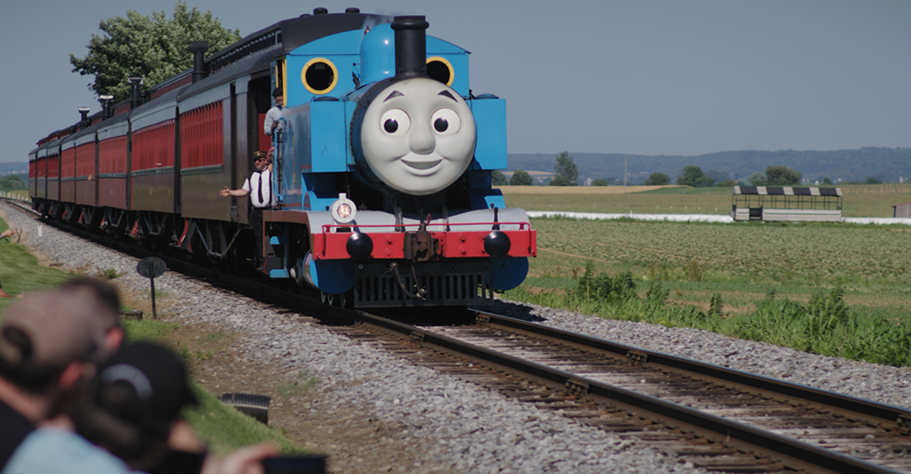
CHARLESTON, W.Va. — Passenger and freight railroad projects will benefit from federal surface transportation dollars made available in President Biden’s $1.2 trillion bipartisan Infrastructure Investment and Jobs Act signed into law in November. But freight railroads should also see residual value from increased carloads of construction-related materials as highway and infrastructure-heavy projects ramp up.
This is an opportunity for more carloads of nonmetallic minerals, like crushed stone, sand, gravel, and cement. Increased shipments of liquid asphalt or metal products wouldn’t be unexpected. For instance, a covered hopper carries approximately 108 tons, equal to 400 cubic yards of concrete. Standard highway bridge projects typically require thousands of cubic yards of concrete per job. Statistics say the U.S. uses more than 370 million cubic yards of concrete per year.
Aggregates also play a role in the formation of asphalt and cement. According to the Association of Equipment Manufacturers, approximately 38,000 tons of aggregates are needed to build one lane of interstate highway. The U.S. produces more than 2.4 billion tons of these materials annually.
Railroads already regularly handle these carloads, but the volume of business is driven by economic activity and project needs. A national focus on rehabbing America’s infrastructure should bode well for railroads that handle these carload types for the foreseeable future.
U.S. railroads handled more than 1.5 million nonmetallic mineral carloads in 2021 and these carload types have experienced modest gains so far in 2022, having handled about 5% more carloads. Of significance, Norfolk Southern has handled 22% more carloads of nonmetallic minerals than 2021; BNSF Railway has handled 18% more sand and gravel; and Union Pacific has seen carload increases of 18% for crushed stone and 10% for non-metallic minerals.
And it’s a compelling argument for railroads, who will seek some of the federal funds for its own infrastructure projects, to highlight the benefits of hauling these materials via rail that would otherwise create more wear and tear on an already strained highway system.
As for the legislation, the President’s Bipartisan Infrastructure Law allocates $110 billion in funds for roads, bridges, and major projects; $66 billion allocation for passenger and freight rail projects [see “Infrastructure bill addresses Amtrak priorities …” and “Not just Amtrak: Infrastructure bill boosts freight projects, too,” Trains News Wire, Nov. 8, 2021]; $39 billion for public transit systems that addresses repair backlogs; $25 billion for airports; and $16 billion for ports and waterways, among other allocations.
Government officials say it is the single largest dedicated bridge investment since the construction of the Interstate highway system.
— Chase Gunnoe works in marketing & sales for the freight rail industry and is the author of Carload Considerations, a monthly commentary series at Trains News Wire. It will discuss the freight rail industry, commodities, and economic trends. Its views are the sole opinion of its author with no particular emphasis on a specific railroad or shipper.














1) This “puff piece” reminds me of George Hilton’s remark about the increase of highway construction material on the 1920’s interurbans as they were forced to dig their own graves sort of. 2) Testimony of contributors here shows the RR’s are driving away carload business. Tragically, going out to railfan shows how the customers are vanishing from the lines. Places where I saw active switching in 1979 are now hiking trails and parks or maybe an unemployment office or two. 3) Lastly, while this is not really railroad-oriented, the last infrastructure bill contained clauses making “gender identification” an official “protected class” for ALL civil rights laws purposes and ALL federal agencies AND judges MUST obey this. So what other unrelated things are in this latest “stop-gap” funding bill just signed? Manadatory union membership via Card Check? Mandatory mail-only voting–especially as someone has been losing my mail lately–which didn’t used to happen? 4) The purpose of this mega-spending is to provide Palladium-plated union jobs, especially on Amtrak. Carrying actual passengers is merely secondary. 5) All will be quickly shelved when we have a war on anyways.
The railroads do not want carload business anymore. Around Detroit, MI there is no stone business, trucks have it all. There is asphalt business. Almost no auto parts except for frames and stamps. Even the scrap business from the stamping plants is truck.
Out of Rougemere Yard in Dearborn, MI CSX has no rail customers until Livonia and that is paper business to a printing plant. All the auto plants do not use rail such as the Ford transmission plant. They get a lot of cars off Conrail.
Will PSR “rules” permit the expansion of the services? It had better come about slowly, for the class 1’s have neither the crews nor the locomotives to handle additional business.